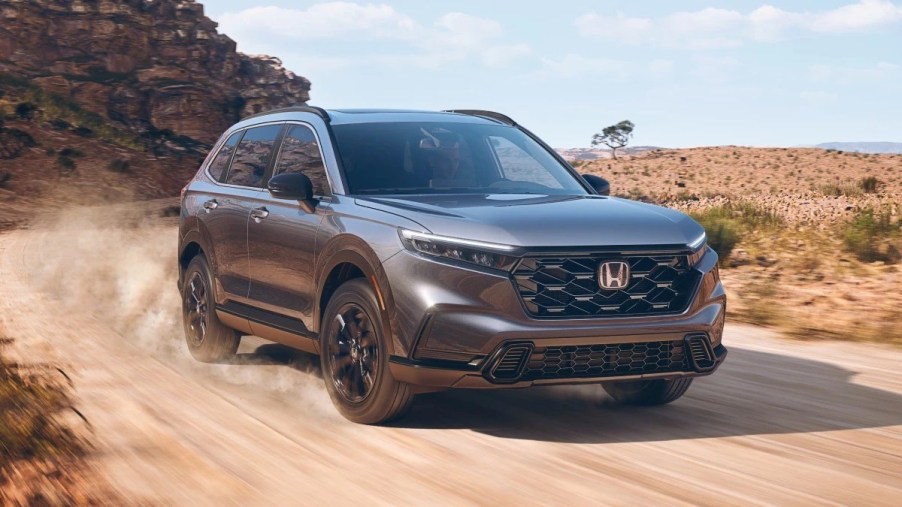
1 Part of Their SUV Honda CR-V Owners Are Least Happy With
The J.D. Power APEAL study is a thorough survey that explores the aspects of automobile ownership, looking at both what people desire from their cars in terms of equipment and comforts as well as what makes them completely obsessed with their cars. When it comes to the 2023 Honda CR-V, the study found that owners had two clear favorites: driving feel and exterior styling.
These characteristics of an automobile go beyond its purely functional aspects and appeal to drivers’ opinions about their cars. In the end, it’s not just about getting from point A to point B, but how you feel and look doing it, and the Honda CR-V seems to be hitting all the right notes for its owners.
Fuel economy is the Honda CR-V owners’ least favorite category
While the 2023 Honda CR-V excelled in many categories, according to the J.D. Power APEAL study, it also fell short in a few areas. In particular, the study found that fuel economy was the least favorite category among CR-V owners. This could be due to several factors, such as rising gas prices or an increased focus on eco-friendliness.
Whatever the reason, it’s clear that for CR-V owners, fuel economy is an important consideration when it comes to their vehicle of choice. As car technology continues to evolve, manufacturers will have to find new ways to balance performance and efficiency to meet today’s drivers’ demands.
The fuel efficiency of the Honda CR-V Hybrid in comparison to one of the rivals
For many buyers of SUVs, fuel efficiency is a top priority, and the 2023 Honda CR-V Hybrid with AWD achieves outstanding results in this area. This model is estimated to get 37 mpg in combined city and highway driving, thanks in part to its hybrid powertrain and 14-gallon fuel tank, which translates to a range of about 400 miles. The CR-V’s Sport Touring trim is estimated to get 36.5 mpg in combined driving, further underscoring the model’s strong fuel efficiency credentials.
When comparing the fuel economy of the CR-V to its rivals, the Toyota RAV4 is another well-liked SUV in this class, and it offers an optional AWD system with a rear driveline disconnect feature to increase fuel efficiency. Until the need for more traction is felt at the rear wheels, this system runs in front-wheel-drive mode. As for fuel economy, the RAV4 is estimated to get 25 mpg in the city and 32 mpg on the highway, which is lower than the CR-V Hybrid’s estimated numbers.
While fuel economy is often considered a key concern for SUV buyers, the J.D. Power APEAL study found that RAV4 owners place this quality mid-pack in terms of satisfaction.
Do owners have valid concerns about the Honda CR-V?
As with any vehicle, individual experiences may vary. One Honda CR-V Sport Touring trim owner reported averaging just 28.7 mpg, which is 8.3 mpg short of expectations. The CR-V’s fuel economy figures are thus called into question as to whether they truly stand out or are merely average for the segment.
While the CR-V’s estimated fuel economy numbers are impressive on paper, real-world driving conditions can impact fuel efficiency. Additionally, individual driving styles and other factors can also affect fuel economy.
Despite this, the CR-V still offers competitive fuel efficiency compared to other SUVs in its class, and its hybrid powertrain helps to differentiate it from some of its rivals.
Owner expectations and priorities ultimately determine whether or not the CR-V’s fuel economy ratings are a source of debate. For some buyers, achieving maximum fuel efficiency may be a top concern, while others may be more focused on factors like driving feel, safety features, or overall value.
In the end, buyers should carefully consider all the factors that matter most to them when choosing an SUV.


